Imagine stepping into a store and instantly being transported to a magical wonderland, complete with interactive displays and tantalizing scents. Or attending an event where you not only witness but actively participate in unforgettable experiences. This is the power of experiential marketing – a revolutionary approach that goes beyond traditional advertising methods. By creating immersive and memorable experiences, brands are able to connect with consumers on a deeper level, leaving a lasting impression that can significantly impact their purchasing decisions. In this article, we will explore the world of experiential marketing, uncovering its secrets and revealing why it has become such a potent force in the world of advertising. Get ready to discover the untapped potential that lies within this captivating technique.
Definition of Experiential Marketing
Experiential marketing, also known as engagement marketing or event marketing, is a strategy that focuses on creating memorable experiences for consumers to connect with a brand on a deeper level. Unlike traditional marketing, which relies on one-way communication, experiential marketing encourages active engagement and participation from the audience. It aims to evoke emotions and create a lasting impression that goes beyond just promoting a product or service.
Overview of Experiential Marketing
Experiential marketing is a powerful tool that allows brands to showcase their uniqueness and create a distinctive identity in the minds of consumers. By immersing individuals in a memorable and interactive experience, companies can foster a deeper emotional connection and build brand loyalty. This strategy goes beyond mere brand exposure and aims to create positive associations and memorable moments that resonate with consumers long after the experience is over.
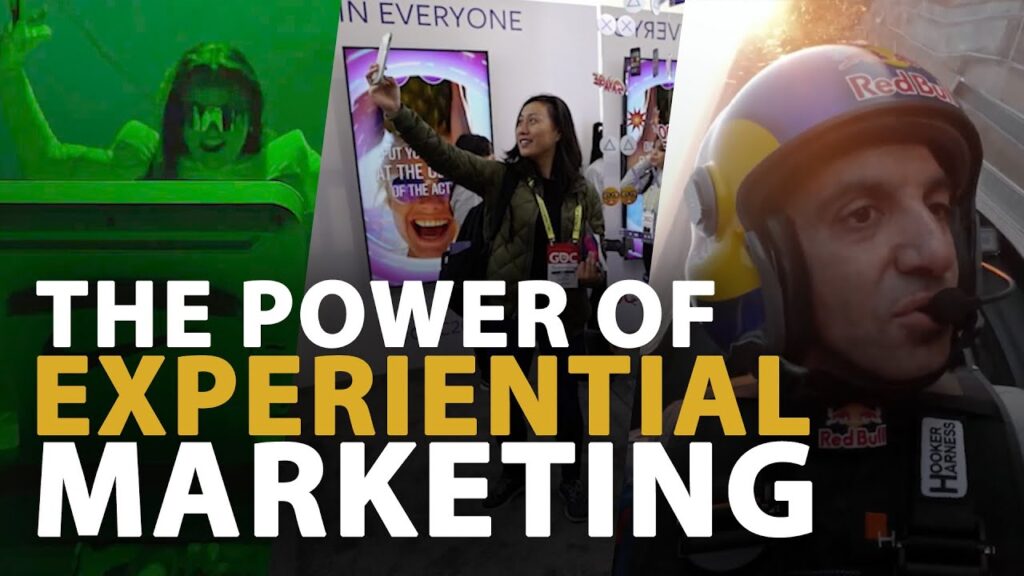
Key Components of Experiential Marketing
There are several key components that make up a successful experiential marketing campaign. First and foremost, it is essential to understand the target audience and their needs and preferences. By identifying the right audience, brands can design experiences that are relevant and appealing to their target market. Additionally, a well-executed experiential marketing campaign should be immersive, interactive, and memorable. It should offer a unique experience that stands out from competitors and leaves a lasting impression on participants.
Difference between Experiential Marketing and Traditional Marketing
Experiential marketing differs from traditional marketing in several fundamental ways. Traditional marketing primarily involves one-way communication, where brands try to promote their products or services through mediums such as television advertisements, billboards, or print media. On the other hand, experiential marketing creates two-way communication by actively engaging consumers in memorable experiences. It allows individuals to interact with a brand, its products, and its values, fostering a deeper emotional connection. Unlike traditional marketing, which focuses on creating awareness and generating leads, experiential marketing aims to create lasting brand loyalty by forging a meaningful bond with the audience.
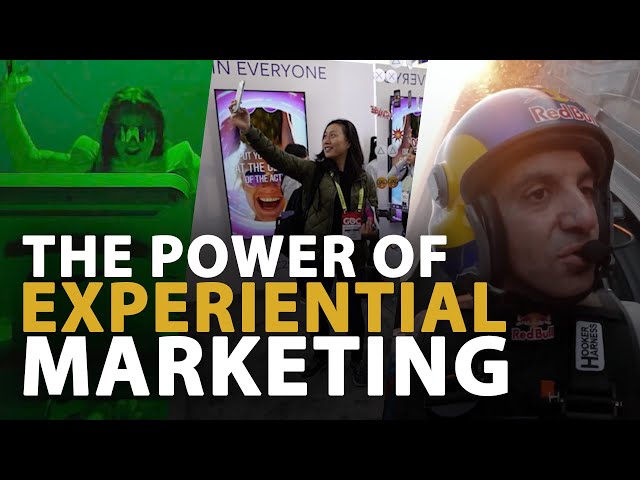
Benefits of Experiential Marketing
Creating Memorable Experiences
One of the significant benefits of experiential marketing is its ability to create memorable experiences that resonate with consumers. By providing a unique and immersive experience, brands can leave a lasting impression on participants, making them more likely to remember and engage with the brand in the future.
Improved Brand Perception
Experiential marketing allows brands to demonstrate their values and personality in an engaging and interactive manner. By offering a memorable experience, companies can shape how consumers perceive their brand, leading to a more positive and favorable brand image. This improved perception can result in increased trust, loyalty, and advocacy among consumers.
Enhanced Customer Engagement
Experiential marketing is designed to actively engage and involve consumers. By offering interactive experiences, brands can capture the attention and interest of participants, encouraging them to become active participants rather than passive observers. This heightened engagement enables brands to forge a deeper connection with their target audience and create a sense of shared ownership and loyalty.
Building Emotional Connections
Experiential marketing aims to evoke emotions and create a memorable and meaningful connection with consumers. By tapping into their emotions and providing a positive and enjoyable experience, brands can foster strong emotional connections. These emotional connections can translate into long-term brand loyalty, as individuals feel a genuine bond with the brand and its values.
Increased Brand Loyalty
Through experiential marketing, brands can create a sense of loyalty and advocacy among their customers. By delivering memorable and engaging experiences, companies can establish a strong bond with participants and cultivate brand ambassadors who are more likely to advocate for the brand and stay loyal to it in the long run.
Generating Positive Word-of-Mouth
Experiential marketing can generate positive word-of-mouth buzz, as participants who have had a memorable and enjoyable experience are likely to share it with their friends, family, and online networks. This word-of-mouth promotion can amplify the reach and impact of the initial experiential campaign, reaching a wider audience and generating organic interest in the brand.
Driving Sales and Revenue
Experiential marketing can have a direct impact on sales and revenue. By creating memorable experiences, brands can increase consumer interest, build trust, and drive purchase behavior. Participants who have a positive and memorable experience are more likely to become loyal customers and advocate for the brand, leading to increased sales and revenue.
Examples of Experiential Marketing Campaigns
Brand Activations at Events
One popular example of experiential marketing is brand activations at events. Brands often set up interactive booths and experiences at concerts, festivals, trade shows, and sporting events to engage with the target audience directly. These activations may include interactive games, photo booths, product sampling, or live demonstrations, providing participants with a memorable experience and an opportunity to connect with the brand.
Immersive Pop-up Experiences
Pop-up experiences have gained popularity in recent years as a way for brands to provide an immersive and temporary experience to consumers. These temporary installations or storefronts offer a unique and interactive experience where consumers can engage with the brand’s products or services in a unique and memorable way.
Interactive Product Demonstrations
Many brands use interactive product demonstrations as a form of experiential marketing. By allowing consumers to try out a product or service firsthand, brands can create a memorable experience that showcases the key features and benefits. This hands-on approach helps consumers connect with the product on a deeper level, increasing the likelihood of making a purchase.
Partnerships with Influencers and Celebrities
Collaborating with influencers and celebrities is another effective way to create memorable experiential marketing campaigns. By leveraging the influence and reach of these individuals, brands can amplify the impact of their experiences and create a buzz around their products or services. These partnerships often involve hosting exclusive events or activations, allowing fans and consumers to engage with both the brand and the influencer or celebrity.
Experiential Events for Product Launches
Product launches present a unique opportunity for brands to create immersive and memorable experiences. By designing experiential events that showcase the new product’s features and benefits, brands can generate excitement and anticipation, creating a lasting impression on attendees. These events may include interactive displays, live demonstrations, or exclusive access to the product, providing consumers with a personalized and engaging experience.
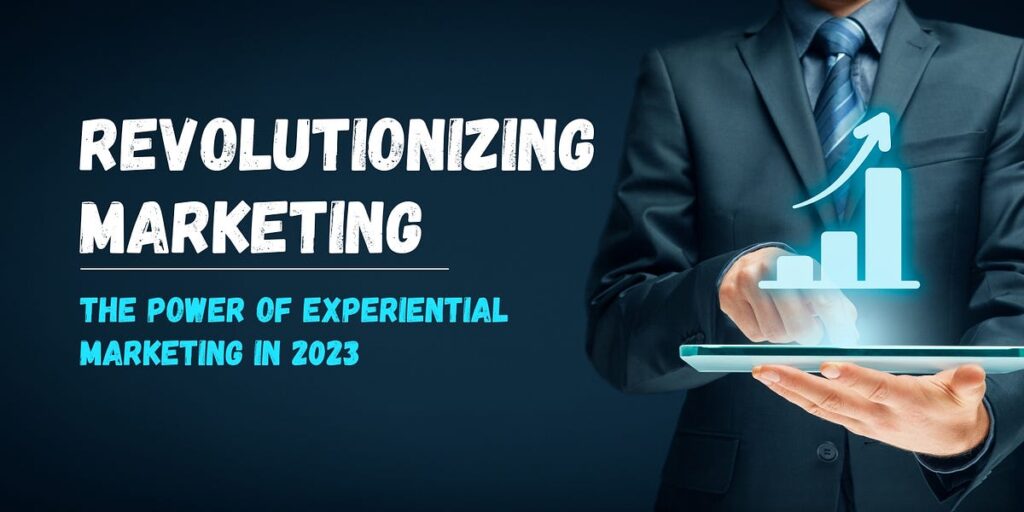
Designing an Effective Experiential Marketing Strategy
Identifying Target Audience and Goals
To design an effective experiential marketing strategy, it is crucial to identify the target audience and understand their needs, preferences, and demographics. By conducting market research and customer analysis, brands can create experiences that are tailored to their specific audience, increasing the likelihood of engagement and loyalty. Additionally, setting clear goals and objectives for the campaign is essential to measure success and ensure alignment with broader marketing initiatives.
Creating a Unique and Immersive Experience
The success of an experiential marketing campaign relies heavily on creating a unique and immersive experience. By offering something out of the ordinary, brands can capture the attention and interest of participants, leaving a lasting impression. This could involve incorporating interactive elements, sensory stimulation, storytelling, or incorporating unique venues or settings to create a memorable experience that stands out in the minds of the audience.
Leveraging Technology and Innovation
Technology plays a vital role in enhancing experiential marketing efforts. Brands can leverage technologies such as virtual reality (VR), augmented reality (AR), or holographic displays to create immersive and interactive experiences. These technologies can elevate the engagement level, allowing participants to explore products or services in a virtual environment or interact with digital elements that enhance the overall experience.
Integration with Digital Marketing
Experiential marketing should not exist in isolation but should be integrated with broader digital marketing initiatives. Leveraging online platforms and social media can help extend the reach and impact of experiential campaigns. By encouraging participants to share their experiences online, brands can generate additional buzz and create a wider digital footprint. This integration allows for a seamless transition from offline experiences to online engagement, creating a holistic and cohesive brand presence.
Ensuring Consistency with Brand Identity
An effective experiential marketing strategy should align with the brand’s identity and values. It is essential to maintain consistency in messaging, aesthetics, and overall brand experience throughout the campaign. This consistency helps reinforce the brand’s image, ensuring that participants associate the experience with the brand and its unique attributes.
Setting Measurable Objectives and Metrics
To gauge the success of an experiential marketing campaign, it is crucial to set measurable objectives and metrics from the start. This could include metrics such as audience reach, engagement levels, social media mentions or shares, lead generation, sales conversions, or customer retention rates. These metrics not only provide a benchmark for success but also allow for continuous optimization and improvement of future experiential marketing initiatives.
Budgeting and Resource Allocation
Effective budgeting and resource allocation are essential for designing and executing a successful experiential marketing strategy. Allocating the right resources, whether it be financial, human capital, or technological, is crucial to ensure the seamless execution of the campaign. It is important to consider factors such as venue rentals, permits, staffing, production costs, technology investments, and post-event analysis when budgeting for an experiential marketing campaign.
Measuring Success in Experiential Marketing
Evaluating Customer Feedback and Satisfaction
Gauging customer feedback and satisfaction is a crucial aspect of measuring the success of an experiential marketing campaign. Conducting post-event surveys or gathering real-time feedback allows brands to understand the participants’ sentiments and identify areas for improvement. This feedback can provide valuable insights into consumer preferences, satisfaction levels, and overall brand perception.
Quantifying Brand Awareness and Perception
Brand awareness and perception are essential metrics to measure the success of an experiential marketing campaign. Tracking metrics such as brand mentions, media coverage, social media reach, and sentiment analysis can provide a comprehensive understanding of the impact the campaign has had on brand visibility and perception. This data helps brands gauge the effectiveness of their efforts in increasing brand awareness and shaping consumer perception.
Tracking Social Media Engagement and Reach
With the rise of social media, tracking social media engagement and reach has become an essential part of measuring the success of experiential marketing campaigns. Monitoring metrics such as likes, shares, comments, hashtags, and user-generated content can provide insight into the level of audience engagement and the overall reach of the campaign. Social media analytics also allow brands to identify influencers or micro-influencers who have organically shared content related to the campaign.
Monitoring Sales and ROI
Ultimately, the success of an experiential marketing campaign can be measured by its impact on sales and return on investment (ROI). Tracking sales conversions, customer acquisition rates, and revenue generated from the campaign can provide a clear indication of its effectiveness. Calculating the ROI involves comparing the costs incurred during the campaign with the revenue generated, allowing brands to assess the financial success of their efforts.
Analyzing Post-event Surveys and Data
Analyzing post-event surveys and data collected during the campaign is crucial for understanding the overall impact and effectiveness of the experiential marketing initiative. By analyzing the data, brands can identify trends, patterns, and areas for improvement. Examining factors such as attendee demographics, satisfaction levels, intentions to purchase, or brand recall can provide valuable insights and help inform future marketing strategies.
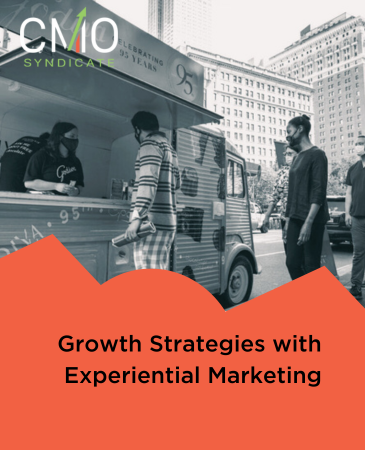
Challenges and Risks of Experiential Marketing
Managing Logistics and Operational Complexities
Executing an experiential marketing campaign involves managing various logistical and operational complexities. From securing suitable venues and obtaining permits to coordinating event logistics and staffing, the logistical aspects of experiential marketing can be challenging. Ensuring seamless and efficient execution requires careful planning, coordination, and attention to detail.
Ensuring Sufficient Budget and Resources
Experiential marketing campaigns often require significant financial resources, making budgeting a critical challenge. Allocating sufficient funds for venue rentals, production costs, staffing, technology investments, and post-event analysis can be a daunting task. Brands must adequately plan their budgets and secure the necessary resources to ensure a successful campaign.
Risk of Negative Publicity or Backlash
Experiential marketing campaigns carry the risk of negative publicity or backlash. With participants actively engaged in the experience, any misstep or oversight can quickly spread through social media or traditional media channels, damaging the brand’s reputation. Brands must carefully plan and execute their campaigns, taking measures to mitigate potential risks and address any issues promptly.
Maintaining Consistency Across Different Locations/Events
Maintaining consistency across different locations or events can be challenging for experiential marketing campaigns. Brands must ensure that the same level of quality, messaging, and experience is delivered consistently across various locations or events. This requires effective communication, clear guidelines, and careful oversight to ensure a cohesive brand experience that resonates with participants.
Overcoming Consumer Skepticism
Consumers are increasingly skeptical of traditional advertising and marketing tactics. Experiential marketing aims to overcome this skepticism by providing an authentic and engaging experience. However, convincing consumers to participate in these experiences and trust the brand’s intentions can still be a challenge. Brands must be transparent, deliver on promises, and focus on creating genuine connections to overcome consumer skepticism.
Competing for Attention in Crowded Marketplaces
In today’s crowded marketplace, brands face intense competition for consumer attention. With numerous experiential marketing campaigns vying for participants’ time and energy, standing out from the crowd can be challenging. Brands must develop unique and innovative experiences that captivate the audience and differentiate themselves from competitors.
Trends and Innovations in Experiential Marketing
Virtual Reality (VR) and Augmented Reality (AR) Experiences
Virtual reality (VR) and augmented reality (AR) experiences have been on the rise in experiential marketing. These technologies allow brands to create immersive, interactive, and memorable experiences for participants. By integrating virtual or augmented elements into real-world settings, brands can transport participants to different environments, showcase products or services, or create unique storytelling experiences.
Gamification and Interactive Elements
Gamification and interactive elements have become popular trends in experiential marketing. Brands are incorporating game mechanics, challenges, or interactive elements to engage participants and enhance their overall experience. This approach not only provides entertainment value but also encourages active involvement, increasing engagement and making the experience more memorable.
Personalization and Customization
Personalization and customization are key trends in experiential marketing. Brands are tailoring experiences to individual participants, providing personalized interactions or customization options. By allowing participants to customize their experiences, brands can create a sense of ownership and emotional connection, making the experience more meaningful and memorable for participants.
Integrated Social Media Experiences
The integration of social media experiences is a growing trend in experiential marketing. Brands are leveraging social media platforms to enhance the overall experience and extend the reach of their campaigns. From creating dedicated hashtags and encouraging participants to share their experiences online to incorporating social media elements into the physical experience, brands are creating a seamless transition between offline and online engagement.
Sustainability and Eco-Friendly Activations
As sustainability becomes more important to consumers, brands are incorporating eco-friendly activations into their experiential marketing campaigns. From using environmentally friendly materials and reducing waste to promoting sustainable practices or supporting social causes, brands are aligning their experiences with sustainability values. These initiatives not only appeal to environmentally conscious consumers but also demonstrate the brand’s commitment to responsible business practices.
Inclusivity and Diversity-Focused Campaigns
Inclusivity and diversity-focused campaigns are gaining momentum in experiential marketing. Brands are creating experiences that celebrate diversity, inclusivity, and cultural heritage. By ensuring that experiences are accessible and inclusive to all participants, brands can create a sense of belonging, foster positive brand perception, and appeal to a wider audience.
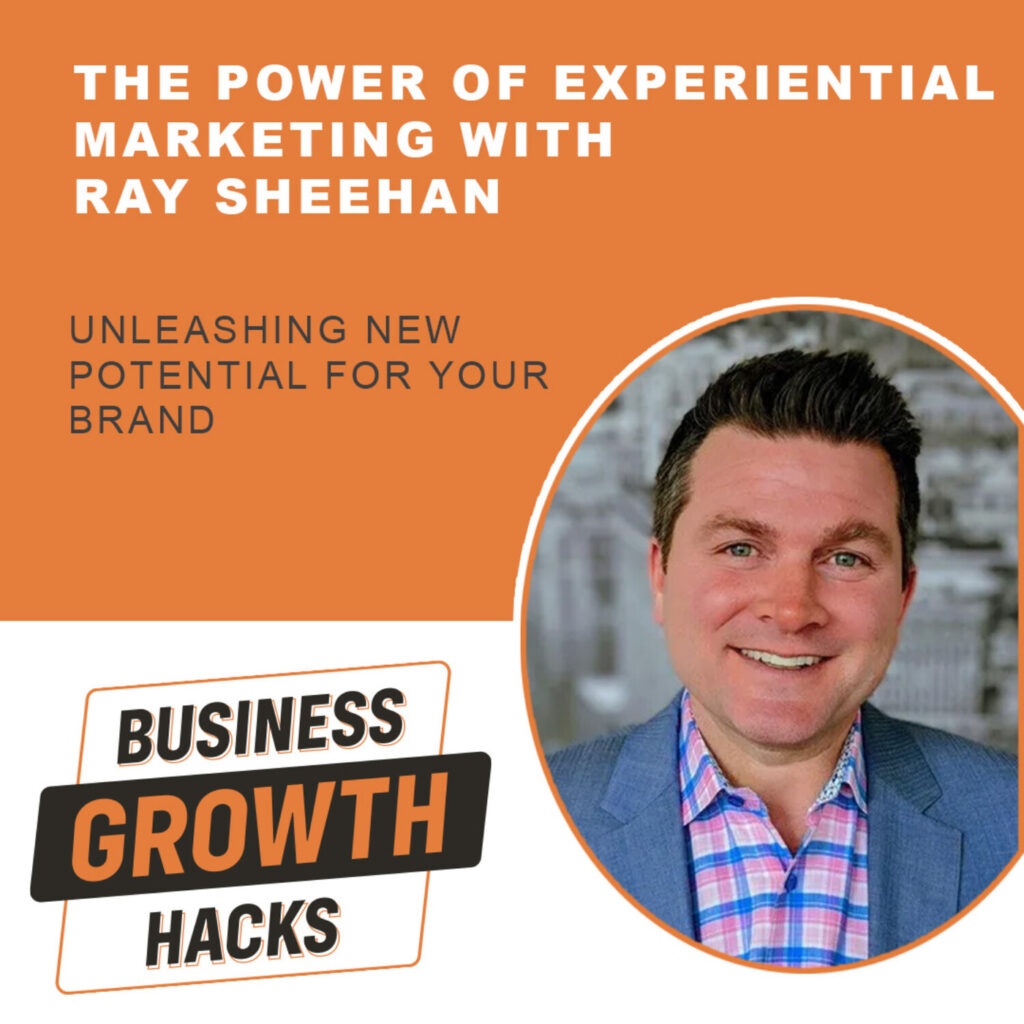
Strategies for Maximizing ROI in Experiential Marketing
Integrating Experiential Marketing with Broader Marketing Initiatives
To maximize ROI, brands should integrate experiential marketing with their broader marketing initiatives. By aligning experiential campaigns with other marketing channels, such as digital marketing or traditional advertising, brands can create a cohesive and consistent brand experience, amplifying the impact of their efforts.
Building Strong Partnerships and Collaborations
Collaborating with other brands, influencers, or organizations can enhance the success of experiential marketing campaigns. Strategic partnerships help expand reach, tap into new audiences, and create a buzz around the experience. By partnering with like-minded brands or individuals, brands can leverage their combined strengths to create a more impactful and memorable experience.
Leveraging Data Analytics and Insights
Data analytics and insights provide valuable information for optimizing experiential marketing campaigns. By tracking and analyzing data, brands can gain insights into participant behavior, preferences, and sentiments. These insights can inform decision-making, help refine future campaigns, and maximize the ROI of experiential marketing investments.
Continuous Optimization and Learning
Experiential marketing is an iterative process that requires continuous optimization and learning. Brands should gather feedback, analyze data, and identify areas for improvement to refine future campaigns continually. By embracing a culture of learning and innovation, brands can adapt to changing consumer preferences and maximize the effectiveness of their experiential marketing initiatives.
Investing in Employee Training and Empowerment
The success of experiential marketing campaigns relies heavily on the skills and dedication of the people responsible for executing them. Investing in employee training and empowerment ensures that staff are equipped with the knowledge, skills, and resources needed to deliver exceptional experiences. By empowering employees to take ownership of their roles, brands can enhance the overall quality and impact of their experiential marketing campaigns.
The Future of Experiential Marketing
Advancements in Technology and Digital Experiences
Advancements in technology, such as virtual reality, augmented reality, artificial intelligence, and Internet of Things, will continue to shape the future of experiential marketing. These technologies will enable brands to create more immersive, interactive, and personalized experiences, blurring the lines between physical and virtual worlds.
Blurring Lines Between Physical and Virtual Experiences
The boundaries between physical and virtual experiences will continue to blur in the future of experiential marketing. Brands will leverage technology to create seamless transitions between offline and online engagements, providing participants with cohesive and multi-dimensional experiences.
Rise of Immersive and Multi-sensory Activations
Experiential marketing will increasingly incorporate immersive and multi-sensory activations. Brands will seek to engage participants through visual, auditory, tactile, and olfactory stimuli, creating immersive environments that evoke emotions and leave a lasting impression.
Growing Importance of Emotional Intelligence
Emotional intelligence will become a key focus in future experiential marketing efforts. Brands will aim to create experiences that tap into participants’ emotions, fostering deeper connections and meaningful interactions. By understanding and responding to consumers’ emotional needs, brands can cultivate loyalty and advocacy.
Shift Towards Purpose-Driven and Socially Responsible Campaigns
In response to evolving consumer expectations, the future of experiential marketing will see a shift towards purpose-driven and socially responsible campaigns. Brands will seek to align their experiences with social causes, sustainability efforts, and ethical practices, appealing to conscious consumers and building a positive brand image.
Evolution of Consumer Expectations and Demands
Consumer expectations and demands will continue to evolve in the future of experiential marketing. Participants will expect personalized, meaningful, and authentic experiences that resonate with their individual preferences and values. Brands will need to keep pace with these changing expectations to remain relevant and impactful.
Conclusion
Experiential marketing offers a unique and powerful way for brands to connect with their audience. By creating memorable experiences, brands can engage participants on a deeper level, build emotional connections, and foster long-term loyalty. The benefits of experiential marketing, such as improved brand perception, increased customer engagement, and enhanced brand loyalty, make it a valuable strategy for businesses. However, designing and executing effective experiential marketing campaigns require careful planning, integration with other marketing initiatives, and continuous optimization. By staying up to date with trends, leveraging technology, and aligning experiences with consumer demands, brands can unlock the full potential of experiential marketing and shape the future of brand-consumer relationships.











